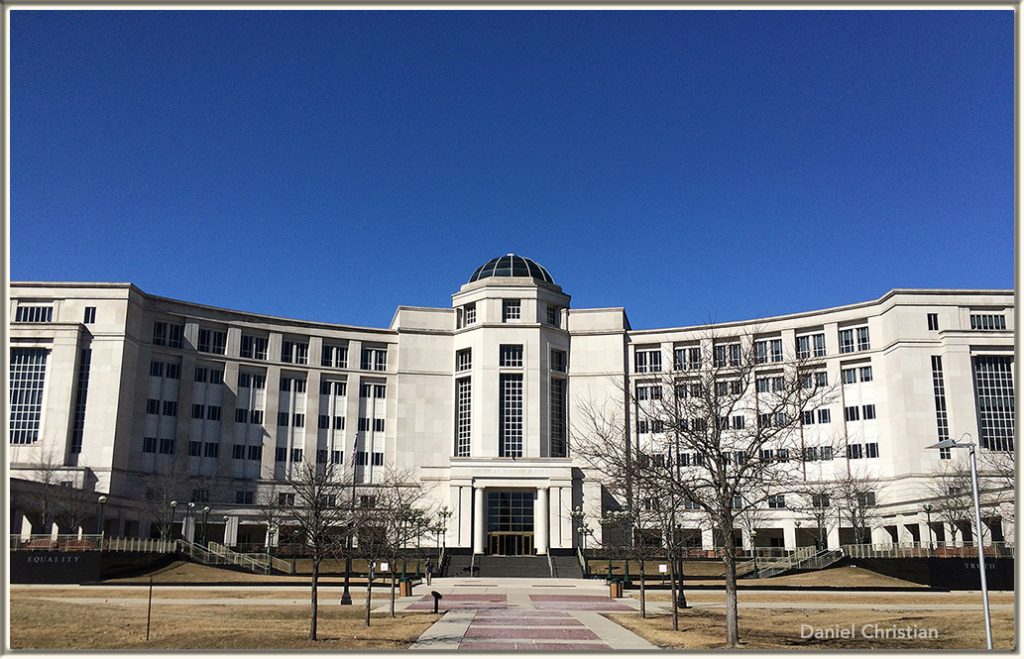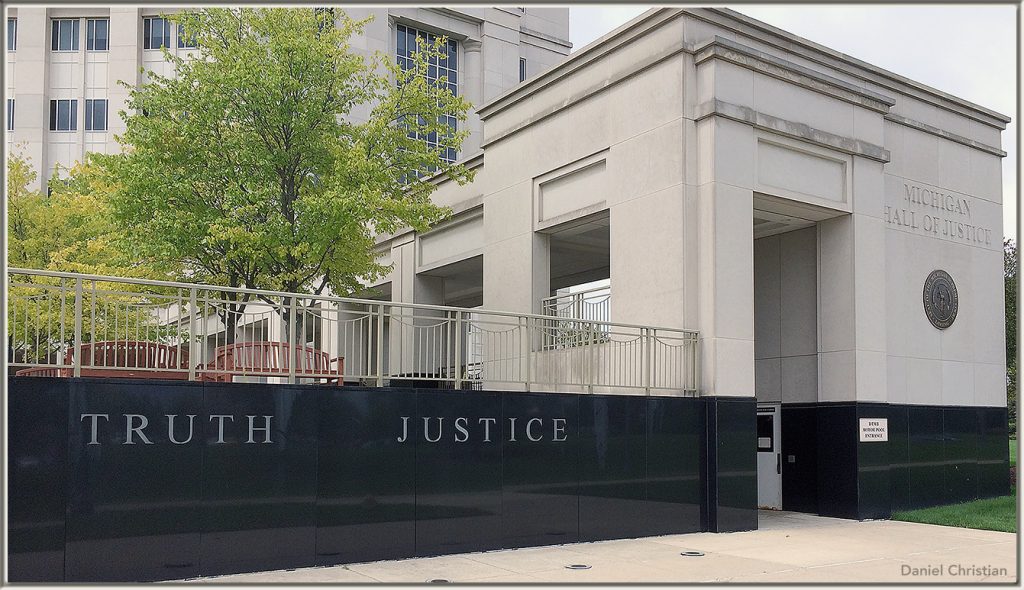College and University presidents respond to Covid-19: 2020 fall term survey — from acenet.edu by Jonathan Turk, Maria Claudia Soler Salazar, and Anna Marie Ramos
Excerpt:
Important New Report on Essential Lawyering Skills — from bestpracticeslegaled.com by John Lande
Excerpt:
Ohio State Professor Deborah Jones Merritt and Institute for the Advancement of the American Legal System Research Director Logan Cornett just published an important report, Building a Better Bar: The Twelve Building Blocks of Minimum Competence, based on insights from 50 focus groups.
They found that minimum competence consists of 12 interlocking “building blocks,” including the ability to interact effectively with clients, communicate as a lawyer, and see the “big picture” of client matters.
They propose 10 recommendations that courts, law schools, bar associations, bar examiners, and other stakeholders should consider in their efforts to move towards better, evidence-based lawyer licensing.
Top IT Issues, 2021: Emerging from the Pandemic — from educause.edu
Excerpt:
The EDUCAUSE Top IT Issues list has been refactored for 2021 to help higher education shape the role technology will play in the recovery from the pandemic. What different directions might institutional leaders take in their recovery strategy? How can technology help our ecosystem emerge stronger and fitter for the future?
The 2021 EDUCAUSE IT Issues project explores these questions using a very different approach from previous years. Anticipating potential ways institutions might emerge from the pandemic, this year we offer three Top IT Issues lists and examine the top 5 issues within three scenarios that may guide institutional leaders’ use of technology: restore, evolve, and transform.
Also see:
The Advantages of Teaching Soft Skills to CS Undergrads Online — from cacm.acm.org by Orit Hazzan; with thanks to Sarah Huibregtse for posting this out on LinkedIn.
Excerpt:
At first, I wondered whether teaching soft skills online is even possible since, unlike theoretical courses, I assumed that close face-to-face (F2F) interaction is required in order to practice such skills. Eventually, I realized that teaching this course online has, in fact, some advantages, that this teaching format opens up new opportunities, and that this medium can even foster several soft skills that I had not previously considered teaching in the F2F format. This blog demonstrates these advantages by focusing on the use of the breakout rooms option available in Zoom, which I used extensively in the course.
The justice gap in the United States is striking. It ranks 103rd out of 126 countries in accessibility and affordability of civil legal services, according to a World Justice Project survey. More than 80% of those in poverty, as well as a majority of middle-income Americans, receive inadequate civil legal assistance, the nonprofit Legal Services Corporation found.
From DSC:
If the public doesn’t have access to justice — and the majority of those involved with civil-based law cases (vs. criminal law cases) don’t — the system has failed. Throughout the last several years, I have thought about the topic of access to justice (#A2J) many times on my walks past the Michigan Hall of Justice building in Lansing, Michigan.
I am hoping that a variety of technologies can help address this problem — at least in part. The impact of the Covid19 pandemic is pushing us in the right direction, but it never should have taken that horrendous event to occur in order for such innovations and changes to take root.



6 “Do not deny justice to your poor people in their lawsuits.
Also see:
Civil Justice for All — from amacad.org
Excerpts:
This report calls for the legal profession, the courts, law schools, tech professionals, and partners from many other fields and disciplines to coordinate their efforts to provide necessary legal assistance to many more people in need. Past efforts to improve access to justice offer strong evidence that such an effort would have a profound effect on American society—measured in financial savings, greater trust in law and social institutions, and the safety and security of families and communities.
THE PROJECT’S SEVEN RECOMMENDATIONS ARE:
First, and above all, dedicate a consequential infusion of financial and human resources to closing the civil justice gap, and seek a significant shift in mindset—extending beyond lawyers the duty and capacity to assist those with legal need—to make genuine strides toward “justice for all”;
Second, increase the number of legal services lawyers who focus on the needs of low-income Americans;
Third, increase the number of lawyers providing pro bono and other volunteer assistance, to supplement the corps of legal services lawyers;
Fourth, bring many new advocates—service providers who are not lawyers—into the effort to solve civil justice problems;
Fifth, foster greater collaboration among legal services providers and other trusted professionals—such as doctors, nurses, and social workers;
Sixth, expand efforts to make legal systems easier to understand and use through the simplification of language, forms, and procedures and the wider use of technology; and
Seventh, create a national team, or even a new national organization, to coordinate the efforts listed above, collect much-needed data on the state of civil justice, and help identify and publicize effective innovations that improve access.
Learning in the Cloud: Canada’s First University to Move Operations into One Secure Cloud Infrastructure Sets the Stage for the Future of Learning — from globenewswire.com by Athabasca University
Athabasca University (AU) lays the groundwork to build a more accessible and personalized future for post-secondary learners
Excerpt:
Edmonton, Alberta, Sept. 23, 2020 (GLOBE NEWSWIRE) — At a time when you can personalize everything from your online shopping experience to your dating prospects, it seems only reasonable to ask: why can’t students “swipe right” on their course load? Why can’t a degree be structured around what someone wants to learn or how they learn, instead of what’s traditionally part of the program? In other words, why isn’t it possible to choose your own adventure in a university environment?
Athabasca University (AU), Canada’s Online University, recently completed a six-month rapid cloud migration project with Amazon Web Services (AWS) to construct a secure, flexible, and global infrastructure required to make personalized learning an infinitely scalable reality. With the completion of its cloud migration project, AU became the first post-secondary institution in Canada to move its entire digital operations infrastructure into its own secure AU cloud environment powered by AWS.
Staff get little to no say in campus governance. That must change. — from chronicle.com by Lee Skallerup Bessette
As professors and administrators debate how to reimagine academe after Covid-19, that reform must include a greater voice for staff members.
Excerpts:
Why, then, in all of this recent (and needed) hand-wringing and speculating about the future of the university, post-pandemic, have we not heard many (if any) staff voices? Or for that matter, any calls for our voices to be included in any planning and restructuring?
…
Faculty members are the experts in their disciplines, but they do not have a monopoly of knowledge around pedagogy, programming, student success, inclusivity, equity, accessibility, among other things. We shouldn’t expect already overtaxed faculty members to be experts in everything and anything. In fact, the intense pressure that many of them are feeling lately is largely because of structures and traditions that discourage professors from collaborating with staff members who are experts in those areas.
…
With college campuses selling themselves as an entire “experience,” not just a set of courses, it’s high time for those of us responsible for that campus experience to be included in the larger conversation.
Digital transformation: 5 ways the pandemic forced change — from enterprisersproject.com by Gordon Haff
The pandemic has reshaped consumer behavior and team expectations. At a recent MIT Sloan CIO Symposium event, CIOs detailed what it means for organizations, IT, and the CIO role
Excerpt:
The new CIO role: Chief Influencing Officer
Zemmel says that the evolution of the role of the CIO has been accelerated as well. He sees CIOs increasingly reporting to the CEO because they increasingly have a dual mandate. In addition to their historical operational role running the IT department, they now are also customer-facing and driving revenue. That mandate is not new for forward-looking IT organizations, but the pandemic has made other organizations hyper-aware of IT’s role in driving change quickly. CIOs are becoming a sort of “chief influencing officer who is breaking down silos and driving adoption of digital products,” Zemmel adds.
Experian’s Libenson puts it this way: “The pandemic has forced us to be closer to the business than before. We had a seat at the table before. But I think we will be a better organization after this.”
WMU-Cooley Named Top 10 Law School For Ethnic Enrollment in 2019 — from fox47news.com
Excerpt:
LANSING, Mich. — Western Michigan University Cooley Law School, with campuses in Michigan and Florida, was named a top 10 law school for racial and ethnic minority enrollment in 2019 by Enjuris, a collection of independent legal resources for legal professionals.
With Black students comprising 22.4 percent of WMU-Cooley’s total student enrollment in 2019, the law school is ranked in Enjuris’ recently released, Law School Enrollment by Race & Ethnicity (2019) [enjuris.com] report.
Inclusion in Law Firms Should Be About Everyone—Not Just Lawyers — from law.com by Jennifer Johnson
Too many firms leave nearly half of their employees out of diversity and inclusion efforts, only partially delivering on the the full commitment that clients expect.
Excerpt:
Unfortunately, most of these firms are focusing only on their lawyer population, leaving a major component of the diversity and inclusion (D&I) equation without consideration: the contributions of law firms’ business services professionals. These are professionals who are working within the business of a law firm that are not fee earners.
This is no small issue. Among larger firms, it is quite common for so-called “nonlawyers” to comprise as much as 50% of total head count. These business services professionals—members of legal operations, human resources, finance, information technology, marketing and administration functions—are critical to a law firm’s success, but far too often are not treated as valuable members of the larger team.